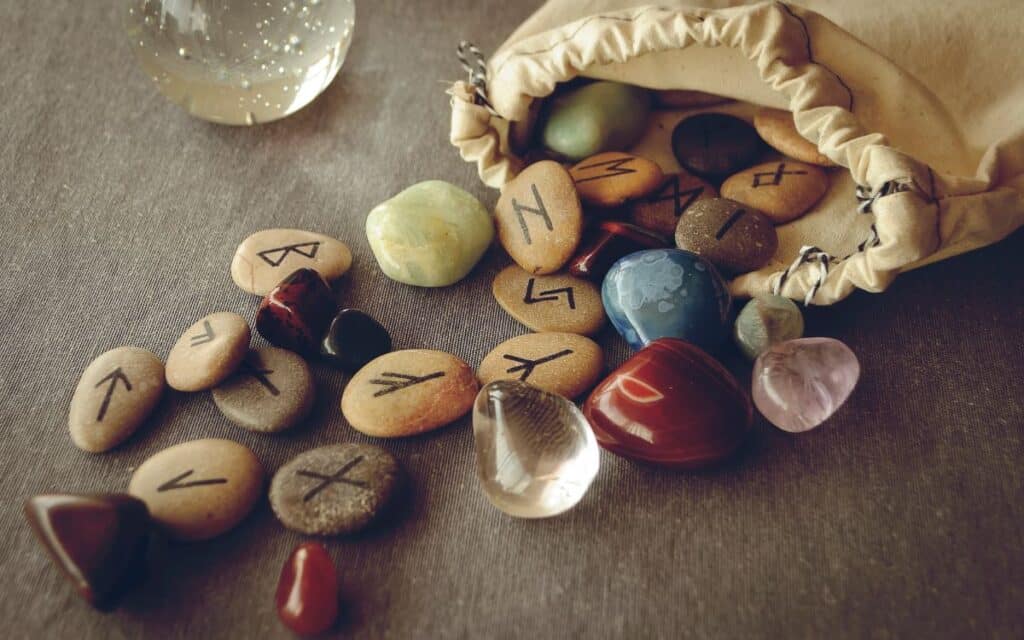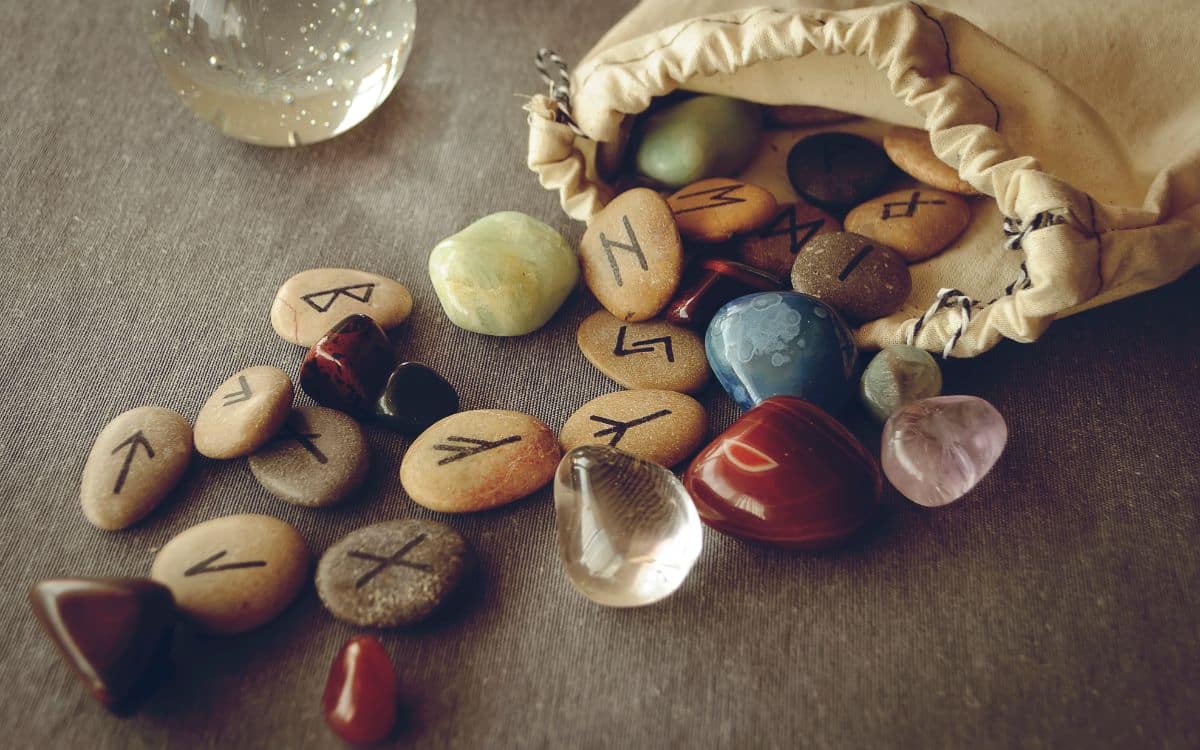In a recent video from Spooky Isles, DAVID SAUNDERSON spoke with esoteric writer and researcher Andy Mercer to delve into the fascinating world of runes

Far from being mere “dominoes” used for divination, runes have a long history that spans thousands of years and various cultures.
Runes have their origins in Europe, with some of the earliest examples dating back to 3,000-4,000 BC.
They gained prominence during medieval times and were initially a system of communication that could be inscribed onto various materials like stone, wood, and rock.
Julius Caesar, during his invasion of Europe, noted that the northern people used pieces of wood with markings to predict the outcomes of battles.
Runes have been found all over Europe, from Greece to Scotland and Ireland, but they are most commonly associated with Scandinavia.
Types of Runes and Their Uses
Runes are not just alphabets; they are more like a “runic futhark,” a collection of characters with mystical values. There are three main types:
- Elder or Germanic Futhark: Consists of 24 runes.
- Younger or Scandinavian Futhark: A later version with 16 runes.
- Anglo-Saxon or Anglo-Frisian Futhark: Contains 25 to 33 runes, depending on the version.
Runes were used for various purposes, including communication, decoration, and magical rituals. They were often inscribed on swords and shields to invoke the power of gods or supernatural forces. In modern times, runes are used for divination, similar to tarot cards, and for meditation.
Making Your Own Runes
One of the appealing aspects of runes is that you can make your own set.
Mercer suggests that making your own runes can create a stronger personal connection, enhancing their effectiveness.
Materials can range from wood to precious stones, and the process of making them imbues them with your energy, making them uniquely yours.
Runes have sometimes been associated with far-right ideologies, particularly the Armanen runes, which were created around 1900.
Mercer’s book aims to redress this misunderstanding, highlighting that these runes were not used by the Nazis, who instead used the Elder runes for their symbolism.
For those interested in learning more about runes, Mercer recommends avoiding Ralph Blum’s book from the 1950s, which introduced some inaccuracies. Instead, there are various magical and academic texts available that offer a more accurate understanding.
For those interested in learning more about runes, Mercer recommends avoiding Ralph Blum’s book from the 1950s, which introduced some inaccuracies. Instead, there are various magical and academic texts available that offer a more accurate understanding.
Runes are far more than simple stones used for fortune-telling. They are a rich tapestry of history, culture, and mysticism that have been used for various purposes over thousands of years.
Whether you’re interested in their historical significance, their use in modern-day divination, or the deeper, more esoteric aspects, runes offer a fascinating avenue for exploration.
Do you use Runes? Tell us your thoughts in the comments section below!



